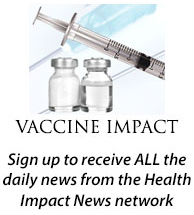
Kratom leaves.
by Paul Fassa
Health Impact News
Within weeks of denying an anticipated change in the DEA’s classification of cannabis as a schedule I controlled substance, the DEA has announced plans to post another harmless plant as schedule I by September 30th, 2016. The newly posted schedule I substance is kratom.
Schedule I is a category of drugs the DEA considers dangerous, subject to abuse, and addictive. The DEA has many drugs like that in other more permissive categories, but the clincher for cannabis and now kratom is that they lack medical merit.
And how does the DEA know whether or not a “controlled substance” has or doesn’t have medical merit? They rely on the FDA’s word, the same government agency that the pharmaceutical industry pays over $2 million for each drug’s license to market.
That’s a drop in the bucket for drug makers, the cost of doing business. But it amounts to a sizable revenue source for the FDA. The pharmaceutical industry always has new drugs to push into the marketplace.
The Negative Impact of DEA’s Assigning Kratom to Schedule I
Throughout the nation, many have been using kratom leaf teas or powders and capsules to help them withdraw successfully from opioid painkillers and that other street drug opioid, heroin. Kratom has been used traditionally for opiate withdrawal primarily in Southeast Asia for centuries.
It was also used to uplift mood and energy for long treks and expeditions through thick jungles and as a mild pain reliever. Kratom is a relative of the coffee plant family. And the stimulus provided is considered comparable to a good sized cup of strong coffee.
Its arrival in the United States has been embraced by more and more. A few states like Indiana had banned its use purportedly for the possibility of abusing it. But North Carolina, which had once banned it, has since reinstated its legality after a strong push back from the public.
Unlike the pharmaceutical industry’s largesse that can afford to lobby so many legislative groups, the kratom industry was not a major influence in North Carolina and other states that had legislative proposals to ban kratom. Except for Alabama and Indiana, those efforts were defeated or the bills were amended to permit kratom use among those over the age of 18.
It should be noted that methadone, a synthetic pharmaceutical, has been traditionally prescribed to help heroin users kick the habit. The DEA has it classified as a Schedule II drug, which means it has a high potential for abuse as a narcotic but it’s legal to use if it’s prescribed by an M.D. The abuse of former heroin addicts taking more to recreate the euphoric sensations of heroin have resulted in many deaths.
Methadone is also sometimes prescribed as a painkiller. Despite accounting for only two percent of total opioid painkiller sales, methadone is responsible for 30 percent of the opioid painkiller deaths, well over 1,000 in 2010 according to the CDC.
No deaths, zero, from pure kratom are recorded.
Soon (September 30th) the kratom ban goes nationwide in earnest. As a DEA Schedule I drug, anyone using, growing, or supplying this benign coffee plant relative can be arrested and jailed like a heroin and cocaine user or trafficker. By the way, the DEA announced that public commentary is not welcome.
From the DEA statement issued by acting administrator Chuck Rosenburg:
… the Administrator finds that there is good cause to forgo the notice and comment requirements of section 553, as any further delays in the process for issuance of temporary scheduling orders would be impracticable and contrary to the public interest in view of the manifest urgency to avoid an imminent hazard to the public safety. (Emphasis added)
This “imminent hazard” is largely based on increased poison center alerts, 660 over a five year period (2010-2015). It’s not clear what was mixed with the kratom or how it was administered. Later on in this article you’ll see some interesting and mostly unknown statistics of deaths and E.R. visits from prescribed and non-prescribed pharmaceutical drugs.
Public safety? Kratom has become a popular item for helping overcome depression and opioid withdrawal as well as pain relief, especially in states where medical marijuana is not allowed or its use is restricted.
What has surprised this reporter is the public blow-back from kratom users. The non-profit organization, American Kratom Association, is urging a “call to action” here.
Comparing What’s Considered Medicinal and Legal to What’s Schedule I
Among the pharmaceutical industry’s biggest money makers are the highly addictive and dangerous opioid painkillers, especially Oxycontin and other oxycodone drugs including fentanyl, hydrocodone, codeine, morphine, hydromorphone, or tramadol.
Amazingly, the USA alone accounts for 80 percent of the world’s opioid use that includes heroin and pharmaceutical opioid painkillers.
Since kratom is somewhat of a mood enhancer for many, it can replace those extremely dangerous pharmaceutical anti-depressants and anti-psychotic drugs prescribed even for kids. Many suicides and murders have been attributed to psychiatric drugs.
As a matter of fact, correctly prescribed and used pharmaceuticals account for over 100,000 deaths annually in the USA alone. That’s from the most conservative study done by Dr. Barbara Wakefield from Johns Hopkins Medical Center in the year 2000. Since then there have been higher estimates from others within mainstream medicine.
These death estimates, which usually don’t include permanent physical damage or adverse health reactions, only include prescribed pharmaceutical drugs, not FDA approved over-the-counter (OTC) drugs.
Acetaminophen overdoses, used in Tylenol and other OTC painkillers, account for over just under 80,000 annual E.R. visits, over 26,000 hospitalizations, and nearly 500 deaths annually, mostly from acute liver failure due to this drug. Still, there are ZERO deaths on record from cannabis or kratom.
The FDA is Protecting Whom?
Both cannabis and now kratom threaten the pharmaceutical industry’s biggest blockbuster money makers outside of vaccines, which are supported by legislative enforcement and freedom from liability. Both substances are known for their ability to not only replace opioid pain killers, they both greatly support withdrawing from pharmaceutical opioid addictions.
Like cannabis, kratom is a totally natural substance. It can’t be patented. But active ingredients can be isolated and synthesized with other ingredients to produce drugs that can be patented. So far synthetic cannabis have turned up with negative results in drug trials. And there is a 2010 patent approved for three medical researchers, US 20100209542 A1.
Prior to 2010, pharmaceutical company Smith Kline & French Laboratories obtained a patent for a main alkaloid in kratom in 1964. Patent 3,324,111 is for the alkaloid in kratom known as speciofoline. Both patents were considered for potential pharmaceuticals to assist opioid or other drug withdrawals, even methamphetamine and cocaine.
So both are definitely medical applications. One would suspect that the FDA knows about those efforts. But maybe their blindness intentionally serves a purpose. The FDA is recognized by many as the pharmaceutical industry’s main client and protector.
While allowing all sorts of dangerous food products into the marketplace, such as aspartame and others, the FDA rubber stamps dangerous drugs such as Merck’s non-steroid anti-inflammatory drug (NSAID) painkiller drug Vioxx, which caused an estimated 60,000 deaths after a few years of intense marketing.
Merck had omitted drug trial data that could have warned consumers with heart health issues, and an FDA scientist reported that his bosses refused to include the warning until it was too late. After a few short years with lawsuits mounting, Merck pulled Vioxx off the market in 2004 without urging from the FDA.
Now the DEA’s main medical consultant the FDA is waging it’s own drug war against safe natural drugs and even nutritional supplements. (Source.)
Here’s that kratom call to action site again.
Sources:
http://www.americankratom.org/north_carolina_kratom
http://www.americankratom.org/national_call_to_action
http://www.ncbi.nlm.nih.gov/pmc/articles/PMC3670991/
http://www.businesswire.com/news/home/20150908006067/en/Experts-Speak-Benefits-Kratom-Mistake-Ban
http://thefreethoughtproject.com/dea-big-pharma-monopoly-kratom/#fZqSbYOmLG0CiVtc.99
https://www.drugwatch.com/vioxx/recall/









2 Comments